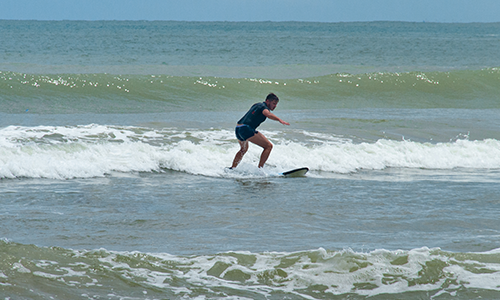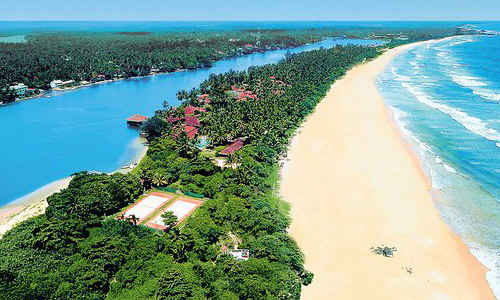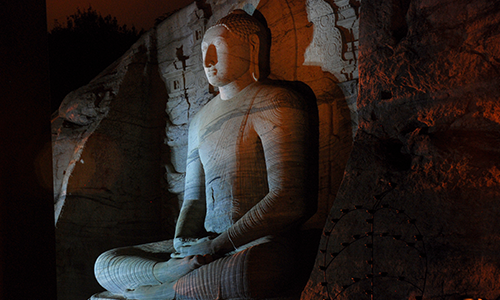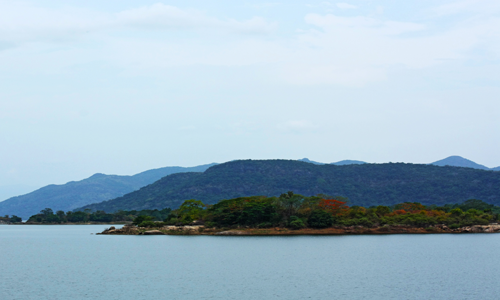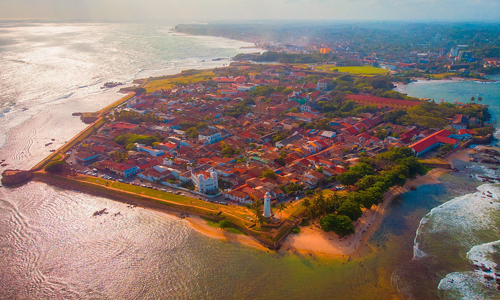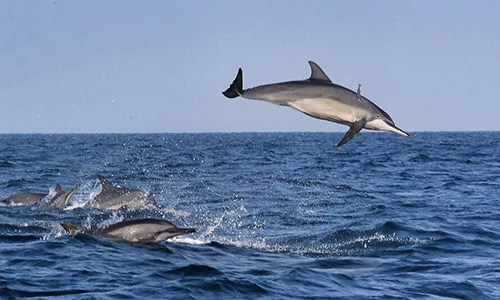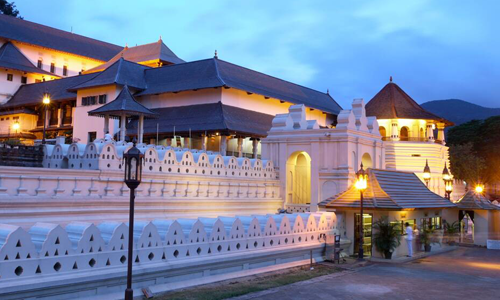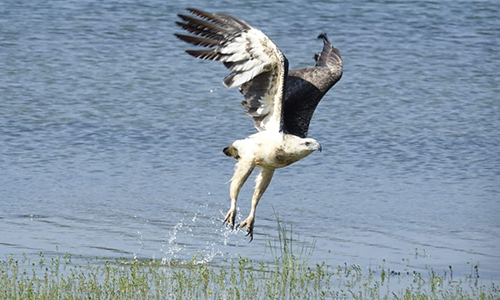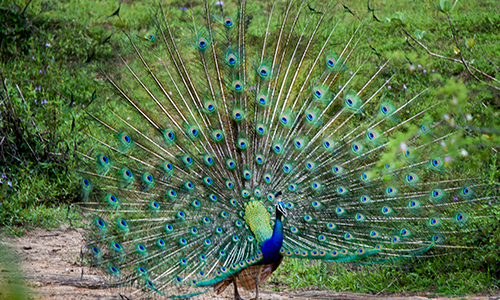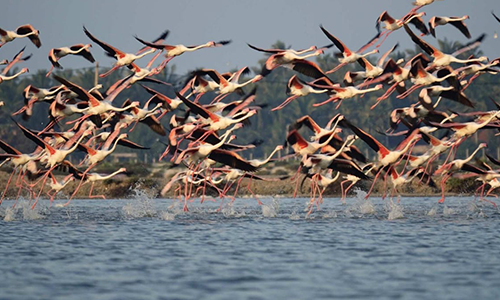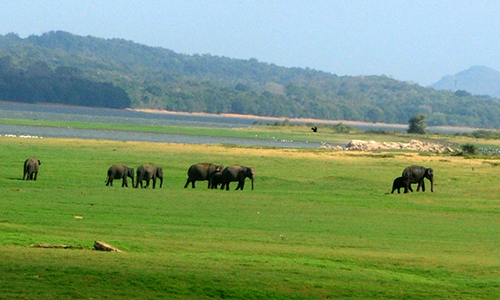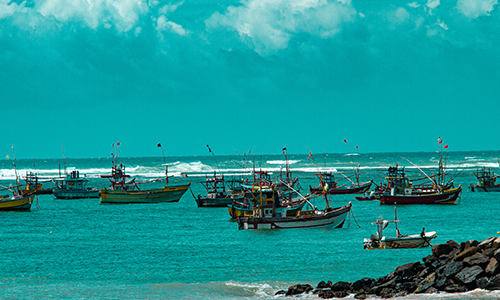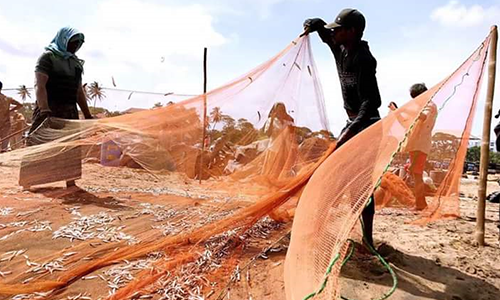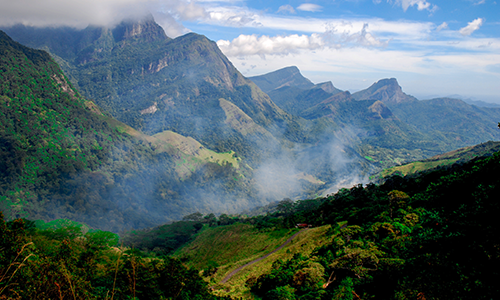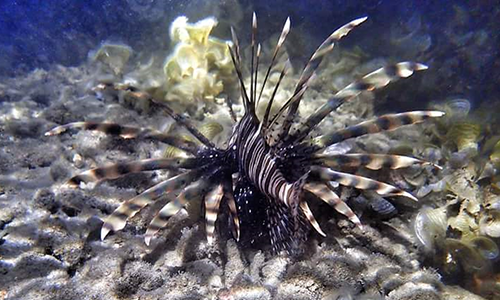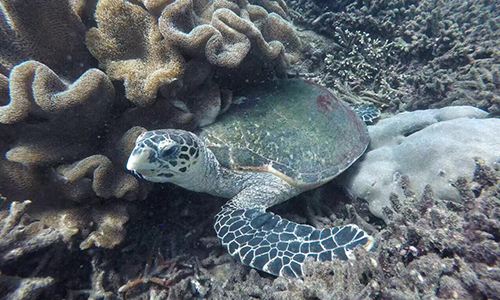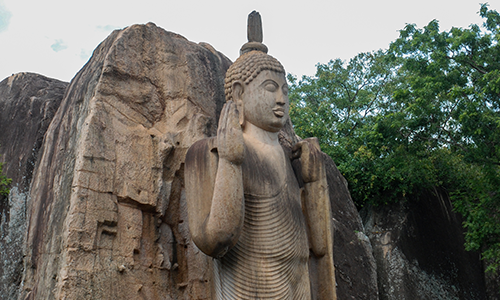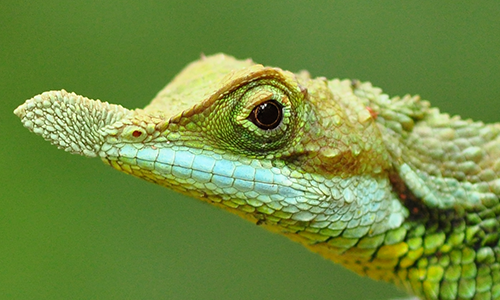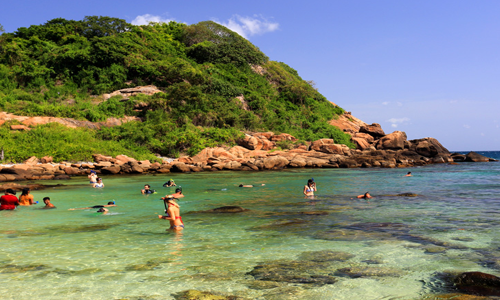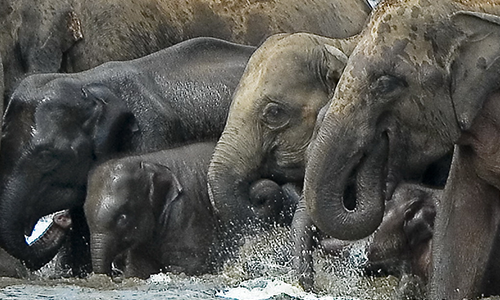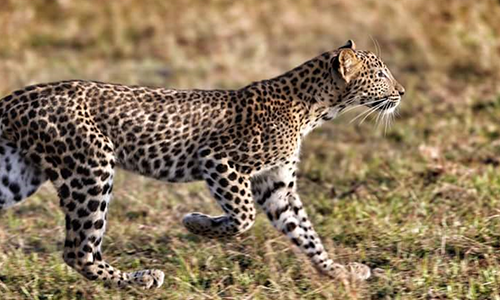Sri Lanka, a resplendent island
of enchanting pristine natural beauty
About Sri Lanka
“Sri Lanka has absolutely everything” cited as the 2nd best place to visit in the world by National Geographic channel, Sri Lanka is the best place to have your dream holiday, whatever your requirement is Sri Lanka has it all. Set in the Indian Ocean in South Asia the tropical island nation of Sri Lanka has a history dating back to the birth of time. It is a place where the original soul of Buddhism still flourishes and where nature’s beauty remains abundant and unspoiled. Few places in the world can offer the traveler such a remarkable combination of stunning landscapes, pristine beaches, captivating cultural heritage and unique experience within such a compact location. Within a mere area of 65,610 kilometers lie 8 UNESCO World Heritage Sites, 1,330 kilometers of coastline – much of its pristine beach – 26 National Parks showcasing an abundance of wildlife, nearly 500,000 acres of lush tea estates, nearly 450acres of botanical gardens, 350 waterfalls, 25,000 water bodies to a culture that extends back to over 2,500 years. Come experience the magnificence of Sri Lanka for yourself and rest assured that it will be the holiday of a lifetime. Sri Lanka has many accommodation options for a traveler. From opulent boutique hotels to private villas, from budget resorts to guest houses there is something for everyone. Top-notch cuisine, stunning scenery, a colorful culture and amazing people all come together to make it the holiday of a lifetime.
To learn more about what to see and do in Sri Lanka, make sure that you read up on the country and available holiday deals so that you can have a vacation that is tailor made to suit you. At Pin Lanka we strive to make our guests happy and content with their vacation and the rest we leave to ‘serendipity’ because after all a ‘happy accident’ is what Sri Lanka is all about.
An awe-inspiring destination, aptly described by The Lonely Planet as an “Incredible Place to Visit”, Sri Lanka's fascinating diversity translates into a bountiful legacy of pristine natural beauty, interspersed with a spectrum of alluring scenery that's bound to bewitch the discerning traveler.
The resplendent island, better known as the “Paradise of the Indian Ocean”, is replete with sun-kissed, golden beaches amidst rising waves, tea estates nestling in the midst of green carpeted misty mountains in the central highland's salubrious climes, wildlife and bird sanctuaries and natural rainforests in the unspoiled countryside.
An ideal “family destination”, Sri Lanka has emerged as the first option of perceptive travelers eager to experience the diversity of a country with a rich culture and heritage – a land with a glorious past ruled by ancient kings centuries ago. The island nation is home to some of the oldest cities in the world, and many visitors tour the ancient archaeological sites, particularly in Anuradhapura and Polonnaruwa, as part of their itinerary.
The choices available to visitors to this 'Land Like No Other' are virtually infinite – they can opt to travel to the southern coastal belt to enjoy the sunny sandy beaches and take a dip or dive in the enticing ocean of the tourist hotspots of Hikkaduwa and Unawatuna or set sail to watch giant whales at Mirissa.
Making a bee-line to Negombo, where the golden beach is equally welcoming for sun and fun, is an opportunity most travelers ensure they don't miss out on.
Further away from Negombo, is the township of Kalpitiya, another haven for whale watching, surfing and diving. Famous for its delicious sea food, particularly giant crabs and lobsters, Kalpitiya has also emerged as a key tourist destination.
Trincomalee, Passekudah and Arugam Bay on Sri Lanka's east coast are world famous for whale watching, surfing, diving and water sports. Arugam Bay in particular has been globally acclaimed as one of the best locations in Asia for surfing.
Sri Lanka's positioning as a safe destination for surfers and tourists received a big boost when the men’s qualifying series competition of the World Surf League was held at Arugam Bay with the participation of over 125 surfers from 30 countries in September 2019.
A visit to the central highlands unfolds enchanting scenery with a canopy of lush greenery as the gentle chilly breeze sway the tea bushes nestling amidst the mighty mountains. Waterfalls in the misty hill country are an amazing spectacle, and seeing is indeed believing! Interestingly, Sri Lanka is a country with a high density of waterfalls in the world.
Apart from picturesque Nuwara Eliya called 'The Little England' due to British influence during colonial domination, the Sri Dalada Maligawa in Kandy should be a 'must' on the agenda as the historic Temple of the Tooth Relic reflects the culture, traditions and heritage handed down from the time of ancient Sinhala Kings, who ruled the land.
For wildlife enthusiasts, Sri Lanka is a bonanza as the Wilpattu, Minneriya, Yala and Udawalawe national sanctuaries are a gateway to the wilderness, where elephants, leopards, bears and a host of other animals roam freely, and is a treat to watch and photograph. Professional nature safaris with experienced guides are arranged by tour operators for what will turn out to be a memorable experience!
Adventure sports enthusiasts will also find it great fun boating in lagoons and lakes, biking and trekking.
Sri Lanka's places of tourist interest are wide and varied; visitors can climb Adam's Peak, the 2,243m tall conical mountain or Sigiriya rock to view the ancient frescoes, visit nearby Dambulla, proceed to Anuradhapura and Polonnaruwa to see the centuries-old archaeological ruins or visit the hilly destination of Ella in the Badulla district to be in close contact with nature. A journey by train to the central highlands offer an enchanting view of scenery very few countries can offer.
What is unique is that a traveler can ride the waves in the morning and enjoy the salubrious climes of the hill country by evening as just three hours of travel either by road or rail ushers in a completely different climate.
And talking of typical local cuisine, it's spicy but simply delightful! On the weather, apart from seasonal monsoon showers, the climate is generally bright and sunny. As Sri Lanka doesn't experience snow, there's no hassle traveling across the country at any time of the year.
Wherever travelers may opt to visit in this beautiful country, there's one fundamental factor they will always experience – the signature Sri Lankan smile and warm hospitality.
Discover Sri Lanka
Anuradhapura, one of the ancient capitals of Sri Lanka, is famous for its well-preserved ruins of centuries-old Sinhala Buddhist civilization. Tucked away in the country’s north central province, this glorious seat of kingdom remained the greatest monastic city of the ancient world from the mid 5th century B.C. until the 11th century A.D. Declared a UNESCO World Heritage Site, this tranquil destination – where kings once strode – stands amidst towering ancient stupas (dagobas) with stupendous domes, ruins of royal palaces, Buddhist monasteries and temples, rock carvings of monumental richness and remarkable grace, colossal stone pillars, magnificent stone cut swimming pools and reservoirs of sophisticated hydrology. The modern world marvels at these amazing ancient civil engineering feats accomplished without sophisticated technology. Anuradhapura, known as the “cradle of Sinhala Buddhist civilization”, is a key center of pilgrimage for Sri Lankan Buddhists, who make the journey to venerate the sacred Jaya Sri Maha Bodhi, a branch from the historical Sri Maha Bodhi at Buddha Gaya in India, under which Lord Buddha attained Enlightenment.
With its fantastic waves, Arugam Bay is a surfers’ dream come true! No wonder, this amazing seafront location on Sri Lanka’s eastern coast attracts surfers from across the world. The most favored season for surfing is from April to October when the average height of the waves reaches 1.5 to 2.5 meters. Apart from surfing, Arugam Bay is also hugely popular for scuba diving and snorkeling. With an elephant corridor in the locality, wildlife enthusiasts will have plenty to do watching jumbos stroll, wild boar and deer snooping around and crocodiles waiting for their prey. For bird watchers, the best season to visit is in November and December when flocks of colorful birds migrate to the area.
The resort town of Bentota on Sri Lanka’s southwest coast offers a bonanza to ardent lovers of ‘sun and sand’. The long beach stretches north, where it transforms into a sandy strip known as ‘Paradise Island’, parallel to Bentota Lagoon. A popular destination for windsurfing and kitesurfing, this charming location also offer opportunities for diving, with the coral-rich Canoe Rock among the many options.
Dambulla is home to the biggest and best-preserved cave temple complex. This iconic historical site has become an image emblematic of Sri Lanka’s rich history and civilization. Visitors to the area will be amazed by the largest rose quartz mountain range in South Asia. A trek to the Ironwood forest, a wonderful natural reserve, should also not be missed out!
Visitors to the Gal Oya National Park can experience a boat safari on the Senanayake Reservoir. Famous for its rich variety of flora, terrestrial mammals, including the Sri Lankan leopard, water buffalo, sambar deer and more than 100 species of birds have been sighted in this sanctuary.
Galle is a unique city, which reflects the ancient architecture of the Portuguese, Dutch and the British – the three European powers, which conquered Sri Lanka during different time periods from 1505 to 1948. The Galle Fort, the fortified old city built by Portuguese colonists in the 16th century, was subsequently declared a World Heritage Site. The giant complex stands out as the biggest remaining fortress in Asia built by European invaders. With the 18th-century Dutch Reformed Church, and the lighthouse standing on the Fort’s southeast tip, Galle remains a captivating southern city, which continue to enthrall visitors with its collection of centuries-old structures.
Jaffna offers an inspiring combination of historical, cultural and geographical experiences across Sri Lanka’s northern peninsula. Many are the sites worth undertaking a journey along palmyrah-lined, winding roads to visit in this bastion of Hindu tradition, art and culture. The Dutch Fort is a landmark in this northern city and the restored Jaffna Public Library offers a treasure trove of knowledge. Tourists do have a wide choice of places of importance to visit and they should not miss out on any of them as it will prove to be a life-long experience!
During the months of November to March, Jaffna becomes a bird’s paradise. As the grip of winter close over the northern hemisphere, thousands of birds migrate to the warm coastal waters of Sri Lanka.
The small fishing town of Kalpitiya in Sri Lanka’s north western province is hugely famous for whale and dolphin watching. Visitors make a bee-line to the peninsula between the November and March/April season when weather conditions are ideal to snatch a glimpse of diverse sea mammals. With 14 islands, Kalpitiya is a marine sanctuary replete with a diversity of habitats ranging from bar reefs, flat coastal plains, saltpans, mangrove swamps, salt marshes and expansive sand dune beaches.
The sacred city of Kandy sits on a plateau surrounded by mighty mountains in the central highlands, 115km off Colombo. The last capital of Sinhala Kings whose reign saw the country’s indigenous Sinhala culture flourish for more than 2,500 years, Kandy is home to the world famous Temple of the Tooth Relic (Sri Dalada Maligawa) celebrated with the grand Esala Perahera procession in August annually. The heart of this historic ancient city is the scenic Kandy Lake, while the lush tea plantations and bio-diverse rainforest in the hinterland offer a fascinating experience to the discerning traveler. While touring the picturesque hilly destination — the last capital of ancient kings of Sri Lanka – a visit to the Royal Botanical Gardens, situated just outside Kandy, should not be missed out. It is Sri Lanka’s largest landscaped gardens, spanning over 60 hectares, with a history dating back to the 14th century. However, it was the British, who formally established the sprawling pleasure park in 1843 after they took control of the Kandyan Kingdom. When talking of being close to nature in its pristine beauty, the 104- hectare Udawatta Kele, a historic forest reserve on a hill-ridge in the city of Kandy, should definitely find a place in the itinerary of visitors.
Celebrated as a birder’s paradise, Kumana National Park has an abundant population of wild avifauna. As it is in close proximity to the Yala National Park, elephants and wild leopards can be found roaming within its terrain.
Apart from its elephant habitat, which is one of the key attraction, Maduru Oya National Park is also a hotspot for spotted deer, sloth bears, sambur, porcupines, wild boar, toque macaques and Indian pangolins.
Cutting across Sri Lanka’s dry zone, the journey by road to Mannar is relatively long, but it’s what the northern town has in store for visitors that makes the difference! With its swaying palm trees, the landscape largely varies from wooded jungles to paddy fields. The region is divided into the mainland and Mannar island – a tongue shaped peninsula linked by a causeway over the shallow waters. Talaimannar, the westernmost tip of the island, is almost connected to Dhanuskodi, the easternmost tip of the peninsula of Southern India by a reef of corals.
Minneriya National Park is No. 1 in terms of the elephant population. It is celebrated as the top most location to spot wild elephant herds and to observe their behavior. Termed ‘The Gathering’, the location within the park, is the biggest seasonally recurring gathering of elephants not seen anywhere in the world.
Talk of whale and dolphin watching on Sri Lanka’s palm-fringed southern coast, and what promptly comes to mind is the small fishing village of Mirissa, tucked away amidst the rhythm of rolling waves. The beautiful beach and vibrant nightlife have made Mirissa a popular tourist destination. The number of visitors surge from November to April as the ocean is calm and the whale season gets off the ground.
Aptly described as ‘Little Rome’ because of its considerable Catholic population and the plethora of churches and shrines, Negombo is a modest beach town north of Colombo. The British-era neoclassical St. Mary’s Church, with its ceiling decorated with vivid religious paintings, stands out as a landmark edifice. The 17th century Dutch Fort and the Dutch-era Hamilton Canal in this waterfront tourist destination are legacies left behind by Dutch invaders who captured most coastal areas from the Portuguese in then Ceylon. The placid Negombo Lagoon is famous among fun-seekers for boating and pleasure rides.
With its incredibly captivating landscape and temperate climate, perched atop the chilly, mist splashed mountains is Nuwara Eliya, described as ‘Little England’ in resplendent Sri Lanka. Sitting at an altitude of 1,868 m (6,128 ft), the colonial-era bungalows with their sloping roofs, Tudor-style hotels, well-kept hedgerows and beautiful gardens give visitors the British country-village ‘feel’. The surrounding green canopy of lush tea plantations add to the magical scenic beauty of the awesome hill country destination. During British domination, Nuwara Eliya was the favored cool-climate escape for the hard-working, booze-guzzling English Scottish pioneers of Sri Lanka’s tea industry. Popular among holiday-makers eager to paint the town red, the salubrious climes of the mountainous rendezvous invariably offer the ideal location for a well-deserved vacation away from the hustle and bustle of city life. Nuwara Eliya, which means “City of Light” in the native Sinhala language, is overshadowed by Pidurutalagala, the tallest mountain in Sri Lanka. Visitors to this amazing destination up in the misty hills can enjoy a boat ride on the British-built Lake Gregory, take a stroll on Victoria Park, visit the naturally landscaped, sprawling Hakgala Botanical Gardens or the nearby Seetha Amman Temple, a colorful Hindu shrine decorated with deities. Another viable option is the densely forested Galway’s Land National Park, a sanctuary for endemic and migratory bird species. Seasonal events, which unfold in Nuwara Eliya during February to April, attract thousands of foreign and local tourists as golf tournaments, horse racing, motor cross, clay pigeon shooting and a mega carnival form part of the major festivities.
Imagine being able to walk into the warm, welcoming turquoise-blue sea for quite a distance and still find the water only up to knee level. Unbelievable, but true! That’s Pasikudha, one of Sri Lanka’s most beautiful beaches famous for its shallow seafront framed by natural coral reefs, which simply makes “walking into the sea” a reality. Apart from soaking some rays, there’s also scuba diving and snorkeling for the more adventurous to discover marine life in its diversity beneath the azure waves.
Inhabiting Pigeon Island National Park are hundreds of Blue Rock Pigeons, an endangered species nesting and breeding amongst the rocks. Situated one kilometer off the coast of Nilaveli, a stretch of beach known as the most beautiful in Sri Lanka, it is a unique natural phenomenon made up of two Islands called the Large and Small Pigeon Islands. The island’s name derives from the rock pigeon which has colonized it. The 471.429-hectare natural habitat was designated a Marine Sanctuary in 1963 and was later declared a National Park. The Small Pigeon Island is a favorable feeding and breeding ground for over 300 species of coral reef fish. Those interested in scuba diving, snorkeling and surfing should definitely include Pigeon Island in their itinerary.
It was from the historic city of Polonnaruwa that kings ruled the central plains of Sri Lanka 800 years ago, when it was a vibrant commercial and religious hub. Visitors, who marvel at the ancient wonders of Anuradhapura, do make a bee-line to the twin city of Polonnaruwa as well to view the archaeological treasures of a glorious era dating back to eight centuries. Nestling gracefully in Sri Lanka’s rustic north central province, the tranquil ancient kingdom’s archaeological park offers a delightful opportunity to travelers to explore the myriad of ancient structures and archaeological monuments ranging from tombs and temples to statues and stupas in a compact layout. Visiting The Quadrangle alone will prove to be an experience of a lifetime. Polonnaruwa, the country’s capital from the 11th–13th century, is considered one of the best preserved historic cities in the world. Akin to a ‘Tale of Two Cities’, it is phenomenal to discover that Polonnaruwa has a ‘new town’ about 6km away from its ‘old town’, which is a treasure trove of archaeological value. Many visitors opt to cycle in an exploratory journey across the city. Declared a UNESCO World Heritage Site due to its abundance of historic remains, the magnificence and rich natural beauty of this fascinating age-old city is indeed too difficult for any traveler to resist.
As one of the most visited key archaeological sites in Sri Lanka, Sigiriya offers some of the finest ancient architectures in the world. Described by locals as the ‘Eighth Wonder of the World’, this historic fortress complex encompasses ruins of a magnificent royal palace surrounded by an extensive network of fortifications, sprawling gardens, ponds, canals, alleys and fountains. Perched on a rocky plateau 370 meters above the sea level, Sigiriya is a World Heritage Site.
The Sinharaja Rainforest is home to more than 50% of Sri Lanka’s endemic species of mammals and butterflies, as well as many kinds of insects, reptiles and rare amphibians. A UNESCO World Heritage Site, this tropical lowland natural reserve spans an area of 18,900 acres bounded by rivers on three sides. To the east of Sinharaja is an ancient footpath near Beverley Tea Estate and by the Denuwa Kanda (mountain).
Trincomalee is a dream come true for water-based adventure sports enthusiasts, who can enjoy the thrills of diving, snorkeling or swimming as the amazing city is home to the fine beaches of Nilaveli, Uppuveli and the offshore Pigeon Island. With one of the best natural deep-water harbors in the world, this eastern city has also emerged as a popular whale watching destination. The incredible seven hot springs at Kanniya, 8km from the town, should not be missed.
Famous for its resident elephant population is the Udawalawe National Park, one of Sri Lanka’s oldest wildlife parks. The conservation of elephants got off the ground in this wildlife reserve with the setting up of an Elephant Transit Home. It is also an important sanctuary for water birds.
Famed for its diversity of flora and fauna; the Wasgamuwa National Park is home to 23 different species of mammals. Situated in Wasgamuwa, it is a haven of sloth bears, an endangered species. The sanctuary is also an Important Bird Area.
Famous for its leopard population earlier is the Wilpattu National Park, the oldest and biggest wildlife sanctuary. Though the park has within its fold many endangered species, including the sloth bear, the leopard density is now more at Yala.
Topping the list of wildlife reserves is Yala, Sri Lanka’s most visited and the second biggest National Park, known for its leopard density.
Designated a wildlife sanctuary in 1990, the park encompasses 979 square kilometers with 25 species of mammal including elephants, water buffaloes and sloth bears roaming free in the wilderness. The Park has also been designated an Important Bird Area.


